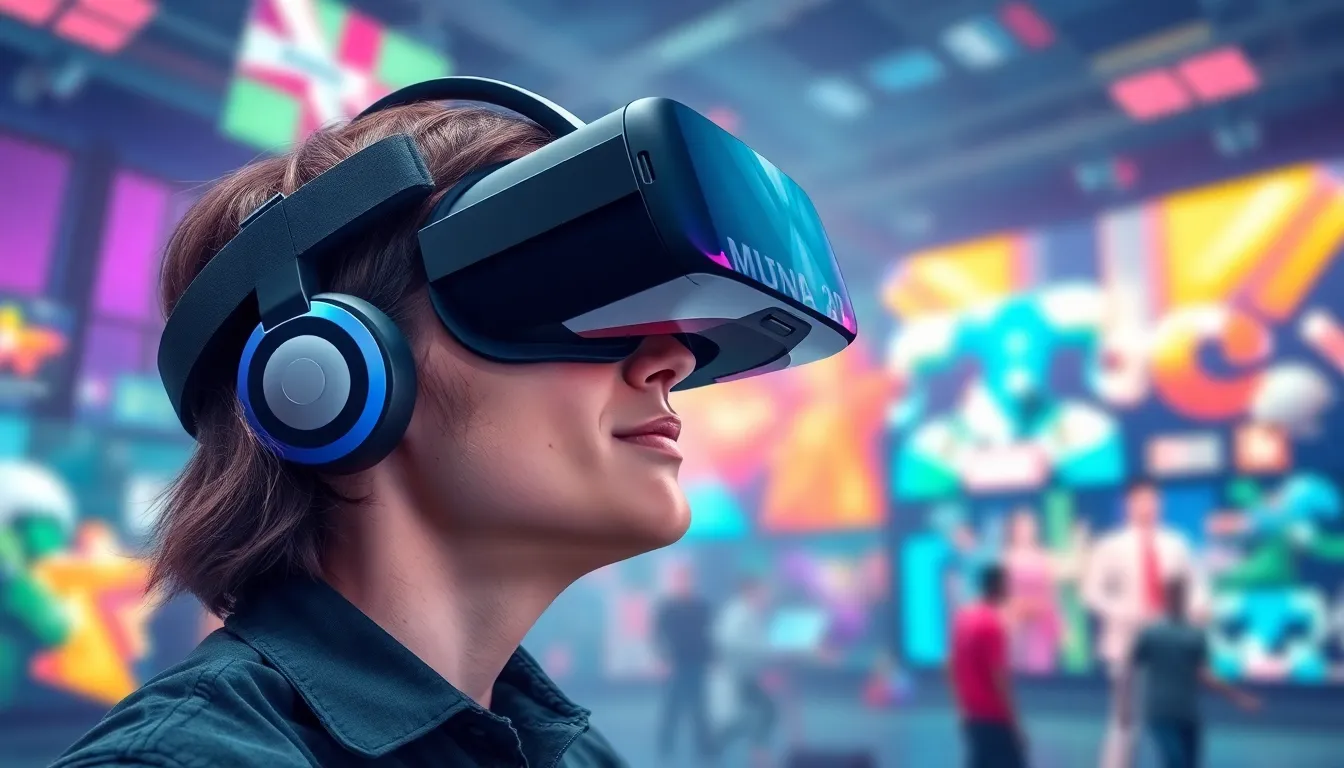Phone:
(701)814-6992
Physical address:
6296 Donnelly Plaza
Ratkeville, Bahamas.

Virtual reality gaming is no longer a sci-fi fantasy; it’s a thrilling reality that’s reshaping how players experience their favorite worlds. Imagine stepping into a game where you can swing a sword, solve puzzles, or even dance like nobody’s watching—all without leaving your living room. As technology leaps forward, the future of VR gaming promises more than just immersive experiences; it’s set to redefine social interactions, storytelling, and even fitness.
With advancements in hardware and software, gamers are in for a wild ride. Picture this: a VR headset that not only tracks your movements but also reads your emotions. Yes, you might finally be able to blame your poor performance on your headset being “too sad.” As VR continues to evolve, it’s time to buckle up and get ready for a gaming revolution that’s just around the corner.
Advancements in VR technology promise revolutionary experiences. Developers focus on creating more immersive environments that enhance user interaction. Enhanced graphics and sound quality contribute to realistic simulations. Headsets equipped with motion tracking revolutionize how players engage with virtual worlds.
Gamers benefit from increased accessibility as prices of VR devices decrease. User-friendly interfaces enable a wider audience to explore VR gaming. Social interactions evolve as virtual meetups become commonplace. Players connect globally, sharing experiences that deepen community ties.
Technological integration expands gaming genres. UI innovations allow for intuitive gameplay, making VR suitable for diverse preferences. Experiences in fitness and education leverage VR tools, making workouts engaging and learning interactive. For example, fitness apps sending feedback during workouts motivate users to improve their performance.
Emotional tracking fosters deeper connections between games and players. Advanced sensors gauge player reactions, adapting gameplay to enhance emotional impact. Narratives evolve with this technology, creating personalized story arcs and deeper connections to characters.
The rise of cloud gaming supports VR growth. With high-speed internet, players access vast libraries without needing powerful hardware. Developers focus on optimizing VR content for seamless streaming experiences.
Market trends indicate rising investment in VR gaming, enhancing research and development efforts. Leading companies collaborate to drive innovation, fostering competition that benefits consumers. Gaming conventions showcase new VR applications, highlighting emerging technologies shaping the industry.
Future possibilities point towards even greater advancements in VR gaming. Continuous improvement in hardware and software will likely enhance overall user experience. The intersection of VR with AI and machine learning may further revolutionize how games are developed and played.

VR gaming evolves rapidly, reflecting advancements in technology and shifting player preferences.
Innovations in headset design enhance comfort and immersion. Features like wireless connectivity and improved resolution enrich visual experiences. Motion tracking technology now captures intricate movements, enabling fluid gameplay. Companies are focusing on integrating haptic feedback, allowing users to feel in-game interactions. Emotional tracking systems adapt narratives based on player responses, deepening engagement. These developments create a more vibrant virtual landscape, making gaming experiences more lifelike. Enhanced AI also personalizes gameplay, tailoring challenges to individual skill levels.
Several titles dominate the VR gaming arena. “Beat Saber” combines rhythm and fitness, offering players an engaging way to exercise while having fun. “Half-Life: Alyx” delivers a rich narrative with immersive gameplay mechanics that showcase VR’s potential. “VRChat” allows users to socialize in diverse virtual environments, reflecting the growing importance of online communities. “The Walking Dead: Saints & Sinners” delivers a survival horror experience, challenging players with realistic interactions. These games highlight the diverse genres thriving in VR, appealing to various player interests.
Virtual reality gaming faces various challenges that impede widespread adoption and innovation. Hardware limitations and content development issues significantly affect the industry’s growth.
Many users experience discomfort when using VR headsets, including motion sickness and fatigue. Hardware costs often deter potential players, especially when premium devices can exceed $1,000. Limited graphical capabilities may hinder immersive experiences, restricting the visual fidelity of games. Additionally, battery life poses a significant barrier, as many standalone headsets need more longevity for prolonged play. The lack of standardization among devices complicates cross-platform compatibility, frustrating developers and players alike.
Creating high-quality VR content requires significant investment, both in time and resources. Development teams often struggle with a shortage of skilled professionals experienced in VR design. This challenge leads to fewer innovative titles entering the market. Additionally, financial risks associated with developing new games may discourage publishers from backing VR projects. Many developers find it difficult to meet the demand for diverse genres, limiting the variety of engaging experiences available. As a result, the overall growth of VR gaming faces a bottleneck, affecting its potential trajectory.
The future of VR gaming promises significant advancements that enhance player interactions and experiences.
Immersive technologies create deeper engagement in gameplay. Gamers may soon experience hyper-realistic graphics that heighten visual fidelity. Sound quality advancements lead to multi-dimensional audio, making environments feel more authentic. Second, haptic feedback devices offer tactile sensations, allowing users to physically feel actions within the game. Enhanced motion tracking ensures fluidity and precision, making interactions seamless. Emotional tracking capabilities adapt narratives based on player feelings, personalizing gameplay and creating stronger connections. Gamers can expect a more satisfying experience through these evolving technologies.
Technological convergence plays a crucial role in the evolution of VR gaming. AI integration enhances character behavior, crafting more dynamic and responsive virtual environments. Cloud technology facilitates instant access to a vast library of games, eliminating the need for high-end hardware. Moreover, blockchain technology fosters secure transactions and ownership verification for in-game assets, adding value to virtual experiences. The fusion of VR with augmented reality might create mixed-reality applications, expanding gameplay possibilities. Integrating these technologies promises to elevate immersion and accessibility in the VR gaming landscape.
The future of VR gaming is poised for remarkable growth and innovation. As technology advances players can expect increasingly immersive experiences that blend realism with interactivity. The ongoing development of user-friendly devices and enhanced graphics will broaden accessibility making VR gaming a staple in households worldwide.
With the rise of cloud gaming and AI integration players will enjoy tailored experiences that adapt to their preferences and emotions. While challenges remain the industry’s commitment to overcoming these obstacles signals a bright horizon. As VR gaming continues to evolve it promises to redefine how people connect and engage in virtual worlds.